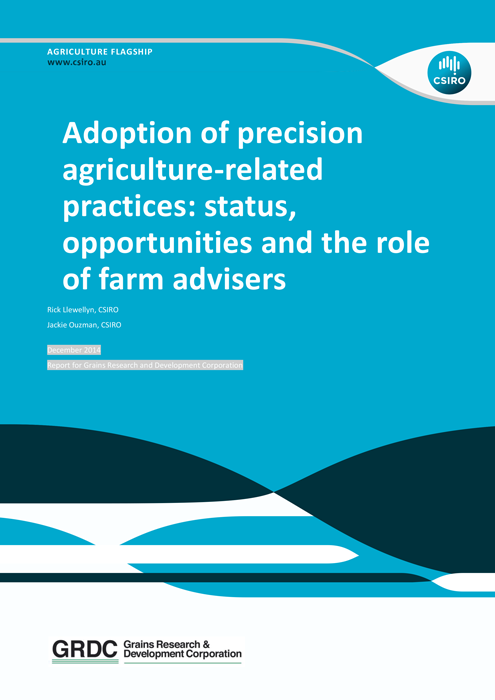Adoption of precision agriculture-related practices: status, opportunities and the role of farm advisers
Adoption of precision agriculture-related practices: status, opportunities and the role of farm advisers
Published: 01 Dec 2014

The study aims to:
- Increase knowledge and understanding of levels and trends in adoption of key practices in cropping regions, in this case precision agriculture-related practices, through the analysis of socio-economic and practice use data collected from Australian grain growers.
- Identify key factors influencing capacity and decisions to adopt or not adopt key practices and approaches, including the role of advisers.
- Recognise attitudes and perceptions that are both influential in the adoption decision and can potentially be influenced by targeted R, D & E activities.
- Inform strategies for increasing the capacity of growers to adopt new practices and achieve more rapid farming systems improvement.
The adoption of spatial management and mapping practices is far from mature in the Australian cropping industry. Use of all practices studied is increasing but unlike autosteer, adoption of spatial management practices cannot be expected to be similarly rapid or extensive across all regions. The results highlight the potential for substantial increases in adoption of precision agriculture-related cropping practices and use of spatial information. Regional differences are highly significant, including some that have not been captured by the variables identified in this study. Many influential factors are associated with information, learning and management demands and these present opportunities for effective intervention. This includes the role of agronomy advisers and support for precision agriculture in assisting growers to achieve the common goal of maintaining simplicity in farming operations. A major step gain in annual profitability is not typically expected from adoption of precision agriculture and considerable information processing and learning is expected to be involved. This means that rapid adoption of spatial management practices has not occurred and should not be expected, even in regions where the role of spatial management is most obvious. However, the results do demonstrate potential for accelerated adoption where advisory support is present and in alignment with adoption potential and relevant on-farm skills. More generally, large differences in use of agronomy advisory support still exist between regions. This study clearly reinforces the conclusions of previous studies of adoption in the Australian grains industry that use of agronomy advisory support is strongly associated with more rapid adoption of cropping practices.
Use https://grdc.com.au/AdoptionOfPrecisionAgricultureRelatedPractices to ensure your link remains current and up-to date
Region National
Region: National
GRDC Project Code: CSA00028,
